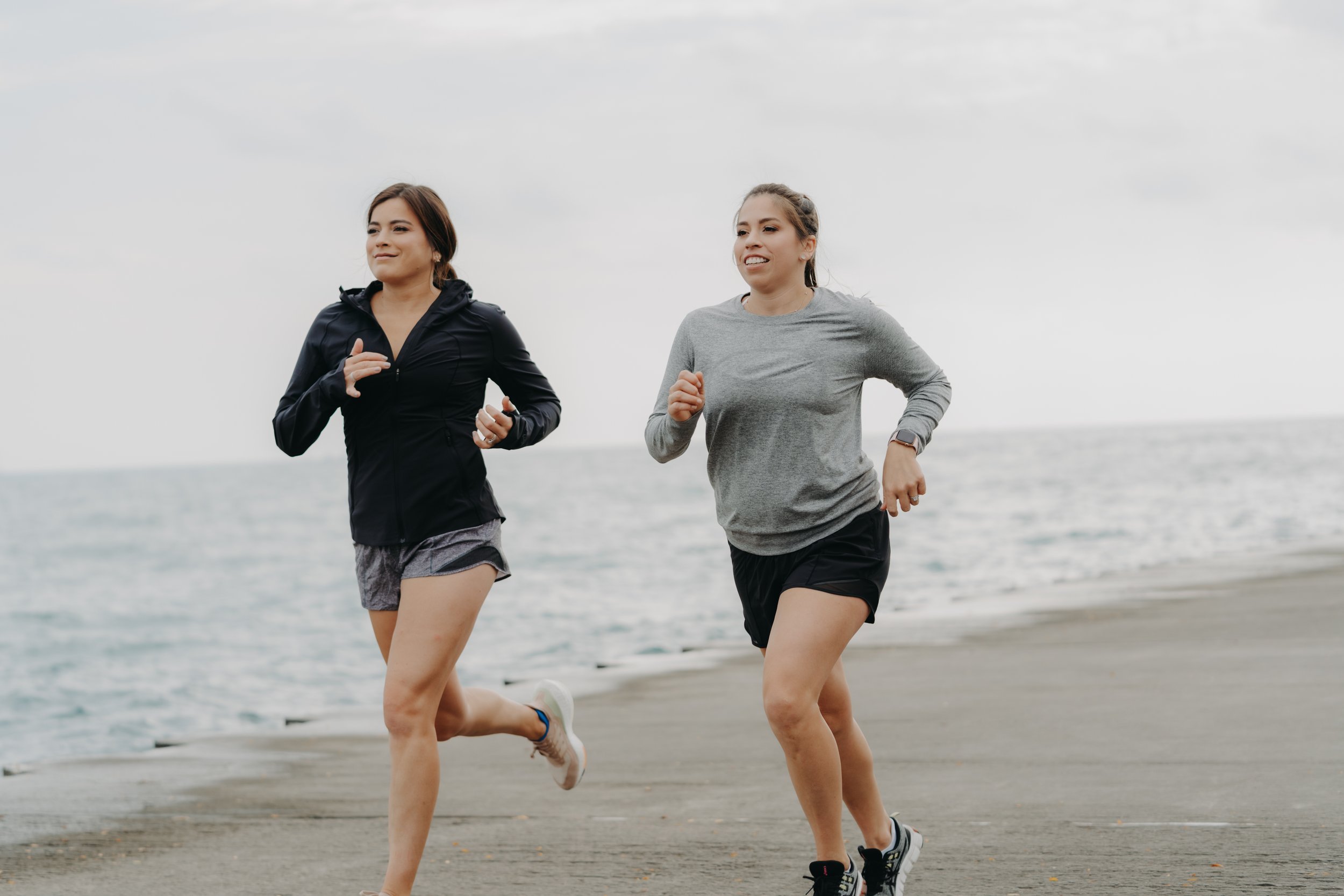How Changing Your Cadence Can Reduce Running Pain
Cadence (or step rate) is how many times you step per minute. Research shows that increasing your cadence 5-10% while maintaining speed can help reduce the strain on your body (achilles tendon, knees and hips and pelvic floor) reducing injuries with running.
When you step more quickly, your body spends less time on the ground. This is good because this decreases the overall amount of impact from running.
A slower cadence results in big, long strides and hard heel strikes. This means that instead of using energy to propel your body forward, you’re essentially putting on the brakes and then having to accelerate with each stride. We want you spend that energy moving forward, not pushing the brake and the accelerator at the same time.
Finding your base cadence?
Count how many times your right foot hits the ground during a minute of running at your selected pace and multiply that by two.
The average runner’s cadence is 140-180 steps per minute (spm) with the goal of being closer to 180.
Example: 80 steps on R leg x2 = 160 spm x 0.05 (5% increase)= 8
160 +8 = 168 spm is new desired cadence
Once your goal cadence feels like your new cadence, try slowing increasing it again.
170-180 is a worthy goal! Remember, 5-10% increase over your base cadence is often enough to make a difference!
How to track cadence?
You can look up songs with beats per minute that match your cadence to help you maintain your new cadence. (try to run to songs that are 170 beats per minute)
Some apple watches and apps can help
Wahoo Fitness, Run Cadence, TrailMix
You want your foot with the beat of the tempo
Drills to increase cadence
Running in place
one and two-legged hops to the beat of the metronome
In order for your body to adjust to this new cadence. You should be able to do it when running fast and slow.
Time: run 1 minute at faster cadence then 3 minutes at your base cadence. Focus on increasing the time of the faster cadence and decreasing the time of the base cadence.
Distance: Run every other quarter mile at faster cadence. Focus on increasing the distance at the new cadence.
Initially this is going to feel harder, but stick with it! This is one of the most simple and effective ways to decrease injuries while improving technique and performance!
PS Did you know we have a 12 Week Return to Running Program in our new app?! Check it out here!

